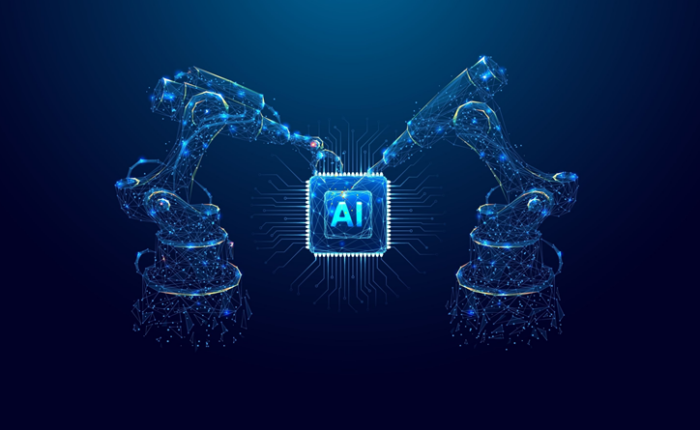Automation: A Blessing in Disguise?
AI-powered platforms like Oracle Autonomous Database, Microsoft Azure’s intelligent performance tuning, and AWS’s AI-enhanced RDS tools are taking over routine DBA tasks with alarming efficiency. Indexing, patch management, anomaly detection, and workload optimization—once the bread and butter of the DBA—are now increasingly delegated to machine learning algorithms.
But is this liberation or obsolescence?
From Firefighting to Strategic Insight
Rather than rendering DBAs irrelevant, AI has shifted their focus. Instead of firefighting operational issues, modern DBAs are becoming data strategists. They’re collaborating with developers and data scientists, architecting future-proof data systems, ensuring regulatory compliance, and managing data governance frameworks.
The tedium is gone, but the thinking cap is still very much on.
New Skills for a New Era
The rise of autonomous databases demands a fresh skill set. DBAs now need to understand AI algorithms, integrate cloud-native services, and interpret machine-generated recommendations. Those who adapt find themselves in high demand—less like operators, more like architects of insight.
Tools for a New Era
Here’s a curated list of top AI tools that are empowering autonomous DBAs in 2025:
-
Oracle Autonomous Database
A pioneer in self-driving databases, it automates patching, tuning, backups, and scaling—freeing DBAs to focus on strategic tasks.
-
Google BigQuery ML
Lets DBAs build and deploy machine learning models using SQL directly within BigQuery, streamlining analytics and predictive modeling.
-
IBM Db2 AI
Integrates AI to optimize query performance and automate workload management, making it a strong choice for enterprise environments.
-
Snowflake Cortex
A new AI layer within Snowflake that enables natural language querying, embedded ML models, and intelligent data discovery.
-
Baserow AI Database
A no-code platform that simplifies building and managing AI-ready databases—ideal for teams looking to scale without heavy engineering overhead.
-
Pinecone
A vector database designed for AI applications like semantic search and recommendation systems—great for unstructured data handling.
-
Weaviate
Another vector database that supports hybrid search, real-time indexing, and native ML model integration.
-
ChromaDB
Tailored for AI-native apps, it supports embedding-based search and is optimized for high-speed, high-volume inference workloads.
These tools are reshaping the DBA landscape—less about maintenance, more about enabling intelligent, scalable, and secure data ecosystems.
Future of Autonomous Database Management
The future of AI in autonomous database management is shaping up to be both powerful and surprisingly nuanced. Here are some of the most compelling trends emerging in 2025 and beyond:
1. Self-Healing and Self-Optimizing Databases
AI is evolving from simply automating tasks to enabling databases that can detect, diagnose, and resolve issues without human intervention. These systems use anomaly detection and predictive analytics to prevent downtime and optimize performance in real time.
2. AI-Powered Quality Agents
These intelligent agents continuously monitor and correct data quality issues—like inconsistencies, duplicates, or missing values—without waiting for human input. They’re shifting data governance from reactive to proactive, ensuring cleaner, more reliable data pipelines.
3. Vector and Graph Database Integration
As AI applications demand more complex data relationships and semantic search capabilities, vector and graph databases are becoming essential. They support high-dimensional data and enable smarter recommendation engines, LLM integration, and real-time analytics.
4. Agentic AI for Root-Cause Analysis and Security
Agentic AI—AI that can reason and act autonomously—is being used to analyze logs, metrics, and events across systems. It can pinpoint root causes of issues, detect security threats, and even execute remediation steps, all at machine speed.
5. Multi-Cloud and Edge-Ready Architectures
AI-driven databases are increasingly designed to operate across hybrid and multi-cloud environments, as well as at the edge. This supports real-time processing closer to data sources, which is critical for IoT and latency-sensitive applications.
6. Explainable AI in Database Decisions
As AI takes on more decision-making roles, there’s a growing push for transparency. Future systems will include explainable AI features that help DBAs and stakeholders understand why certain optimizations or alerts were triggered.
7. AI-Driven Compliance and Governance
With regulations tightening, AI is being used to automate compliance checks, audit trails, and data lineage tracking—making it easier for organizations to stay on the right side of privacy laws and industry standards.
Will Certified Database Administrators (DBAs) Still Needed in the AI World
Because when the systems run themselves, it still takes a human to ask the right questions—and a certified DBA knows which questions matter.
Here’s why certified DBAs remain indispensable in an AI-powered database world:
-
Strategic Insight, Not Just Syntax
While AI can automate tasks, it can’t (yet) reason about long-term infrastructure strategy, budget trade-offs, or regulatory implications. Certified DBAs bring deep architectural understanding that shapes data ecosystems from the ground up.
-
AI Needs Adult Supervision
Autonomous databases still need tuning, training, and occasionally taming. Certified DBAs understand what’s happening under the hood, so they can validate, override, or fine-tune AI decisions when they go off track.
-
Data Governance and Compliance
Regulatory compliance isn’t just about having the right logs—it’s about interpreting them correctly. Certified DBAs know how to structure audit trails, secure sensitive data, and ensure systems pass scrutiny from legal and regulatory bodies.
-
Interdisciplinary Communication
AI can’t replace the role DBAs play as translators between business, data science, development, and operations. Certification programs emphasize communication skills, not just technical knowledge.
-
Resilience and Recovery
In a crisis—say, a cyberattack or a major system outage—you want a certified professional who knows how to manually restore operations, even when AI systems fail. Humans still write the runbooks.
In short, AI enhances database systems, but certified DBAs ensure those systems serve real-world needs safely, ethically, and effectively.
So… Is AI Taking Over?
Yes, at least the grunt work. But the heart of database administration isn’t vanishing. It’s evolving. The DBAs of tomorrow won’t be writing bash scripts to rotate logs—they’ll be leveraging predictive models to drive better data decisions.
In short, AI is not taking the DBA’s seat—it’s redesigning the whole chair.








